
After a down year, the auto industry seems to have come roaring back in 2021, with car companies enticing buyers with some interesting new offerings. A few of these, however, may be too “interesting” for some. For instance, Tesla’s Cybertruck looks like nothing else on the road. The electric truck is made of stainless steel, has a triangular roof, and a covered bed with a top that unrolls for storage, making it completely unique and a little odd-looking.
Automakers are always innovating, coming up with new designs and concepts. Though at first some designs may seem strange, it is the test of time that eventually determines if they become accepted or remain too strange for buyers to adopt. For many of these vehicles, designers either packed too many concepts into one car, conceived of vehicles that were ahead of their time, or simply fashioned too ugly a car.
24/7 Wall St. looked at some of the most unique and outrageous vehicles ever made available to the public to determine history’s strangest car designs.
In some instances, the car itself was innovative but lacked financial and marketing backing to succeed. The Tucker 48 featured disc brakes and four-wheel independent suspension, but as an upstart going against Detroit’s Big Three car makers, the Tucker couldn’t get into gear.
Some of the cars on this list may have failed but still percolate in the public’s memory. The Ford Edsel will forever be known as a marketing nightmare for the company.
The problem with other vehicles on this list is that they were simply unattractive. The Pontiac Aztek looked like its back end had been sawed off, and the AMC Pacer was a fishbowl on wheels.
Then there were cars that were dangerous. The Ford Pinto’s rear fuel tank exploded whenever it was rear-ended, leading to numerous deaths. The Pinto is known as one of the deadliest cars in American history.
Perhaps more than anything, these failed cars demonstrate auto manufacturers’ willingness to innovate — whether in design or function — and cut their losses quickly when they fail. In fact, America’s automotive history is dotted with intriguing concept cars that auto executives decided were just too strange to manufacture at scale and then sell. These are the most intriguing concept cars that never saw the light of day.
Click here to see history’s strangest car designs
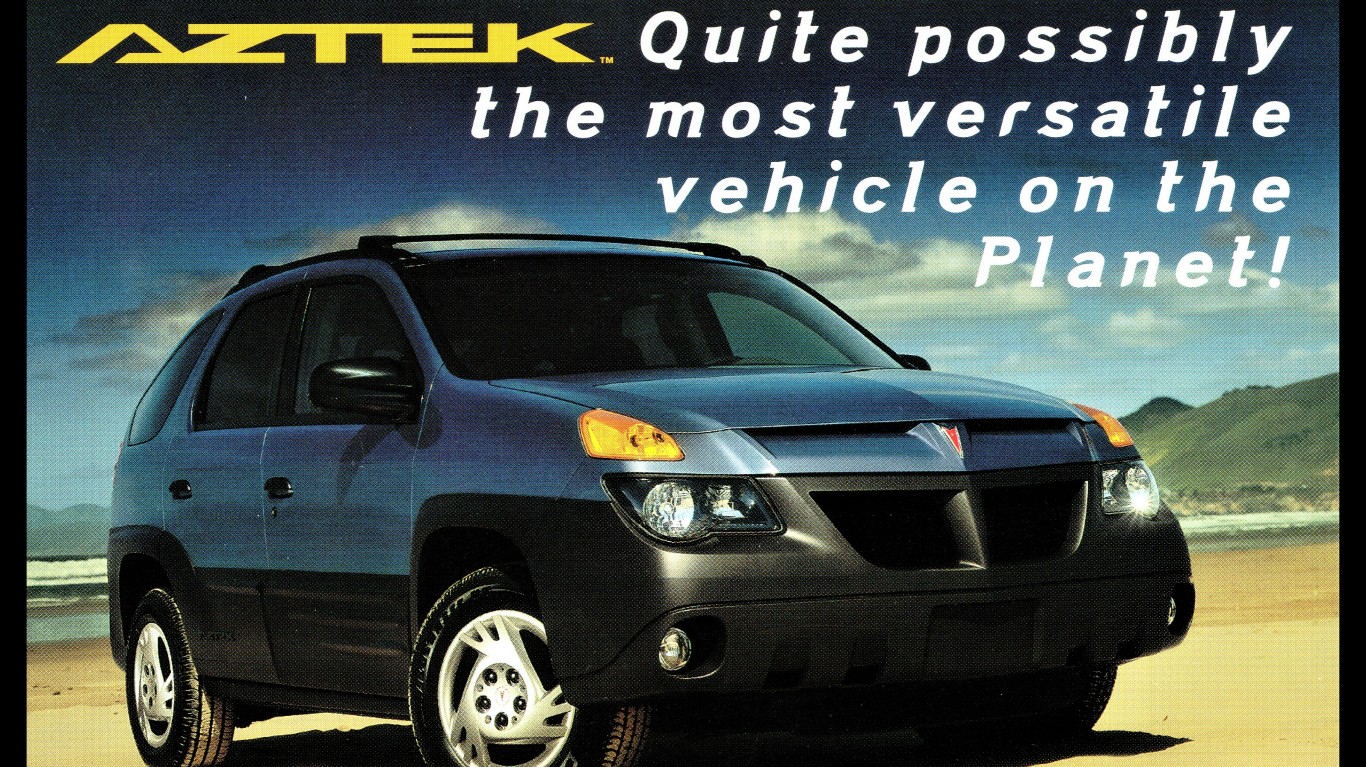
1. Pontiac Aztek
From its introduction to the public at the 2000 Detroit Auto Show, the Pontiac Aztek was derided for its weird design. It had an odd dual roof and a back end that looked like it was sawed off. Maybe the problem was that it tried to be everything to all buyers — an edgy car for younger drivers and a minivan for people with families. Ultimately, it failed to capture any audience segment and GM stopped production in 2005 after dismal sales.
[in-text-ad]

2. Plymouth Prowler
Plymouth entered the sports car arena in 1997, with its retro-styled Plymouth Prowler. Unfortunately, this two-seater with headlights nestled in two separate front bumpers lacked the horsepower (214 horsepower) to back up its claim as a classic hot rod. When Plymouth went under, the model fell under the Chrysler brand. After selling just 11,700 models across the car’s run, Chrysler pulled the plug on the Prowler in 2002.
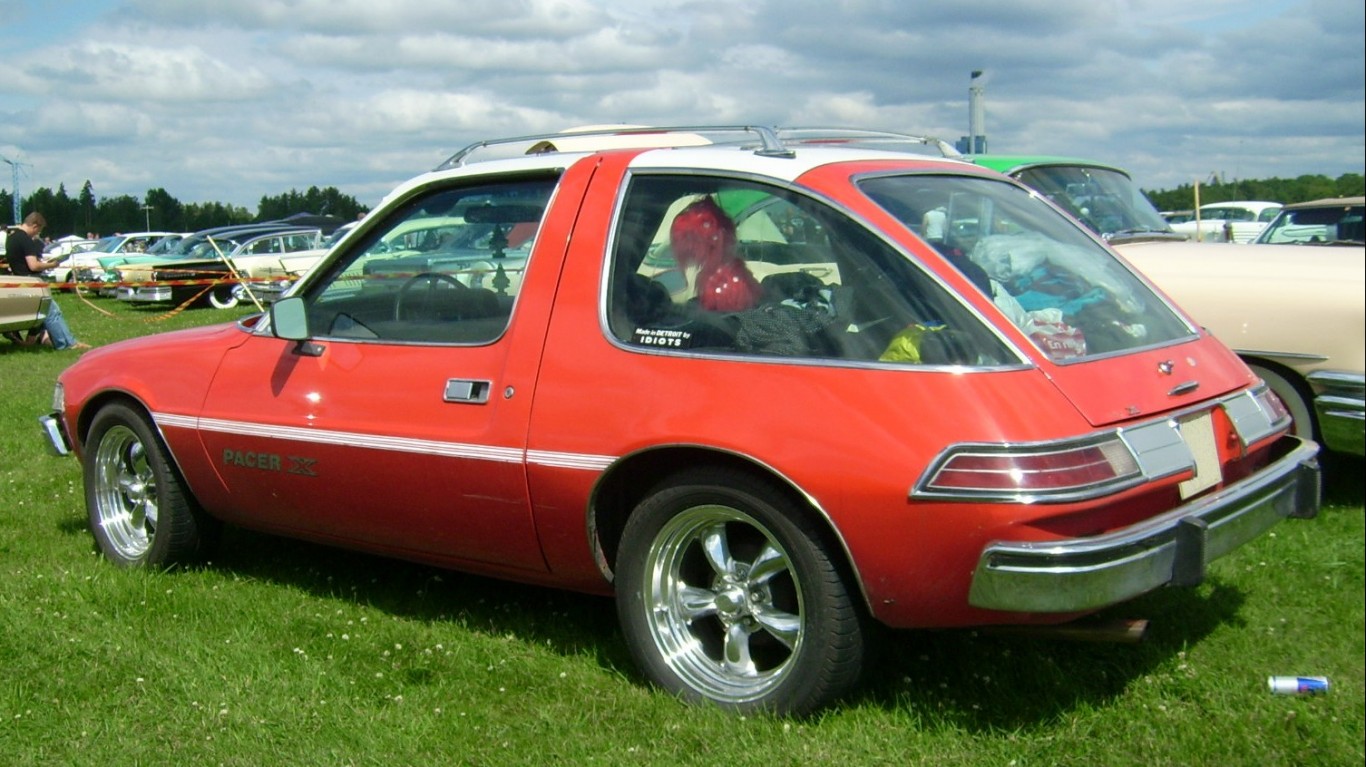
3. AMC Pacer
People who drive glass cars shouldn’t get into accidents. The defining feature of the AMC Pacer was its huge side and rear windows. Touted as being wider than it was tall, the Pacer had a cramped interior and wasn’t particularly fuel efficient. Launched in 1975 at a time when the public was gravitating toward smaller vehicles, the Pacer sold 145,000 units in its first year. Second-year sales dropped to 120,000 and then plunged to 20,000 in the third year. By 1978, sales didn’t break the 8,000 mark, and in 1979 production on the Pacer stopped.
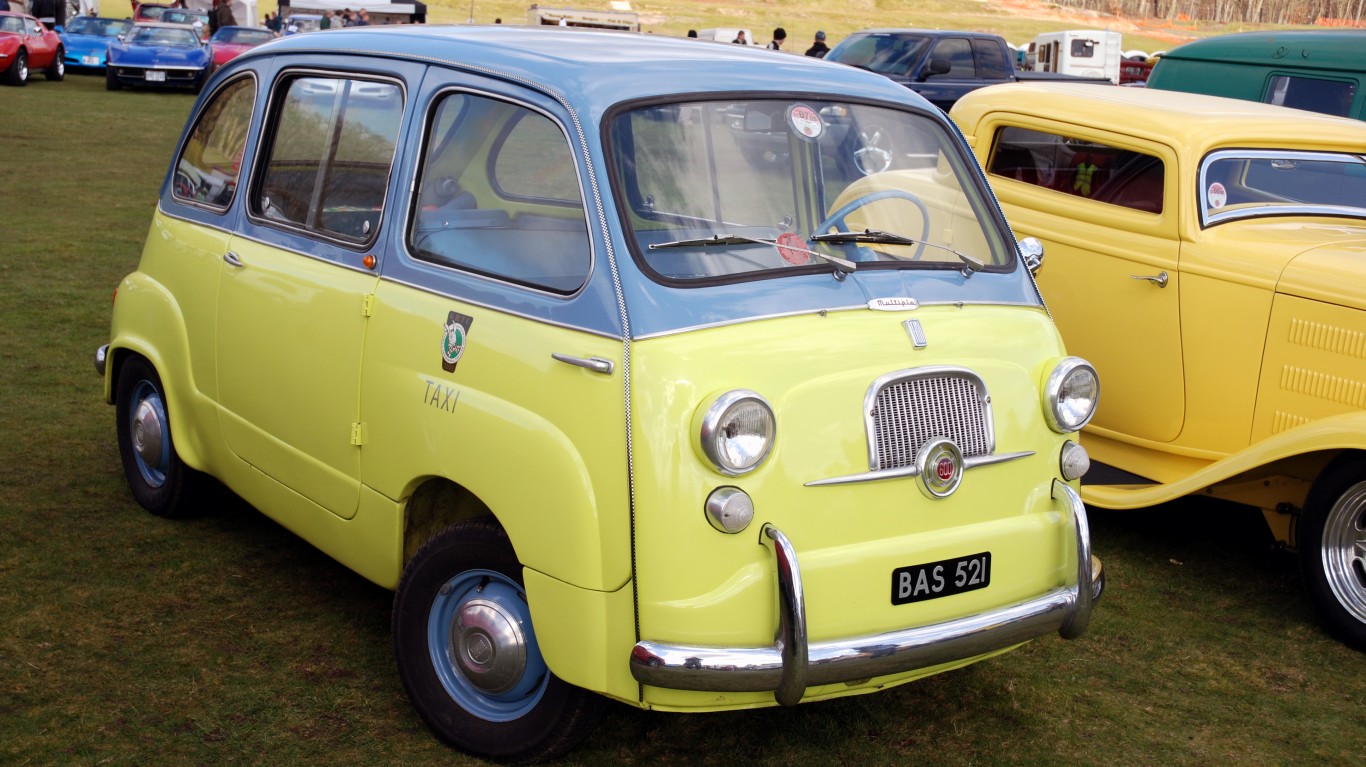
4. Fiat Multipla
Sometimes even Italian car makers get it wrong. The Fiat Multipla has undergone two major rebirths. Originally based on the Fiat 600, the 1950s-era version of the Multipla had a rear engine and was as roomy inside as a small car could be. In 1998, Fiat took this concept further with a vehicle that resembled a minivan with folding seats and plenty of cargo area. But the car looked boxy, and the headlights placed in the windshield were off-putting to buyers. Fiat sold less than 500 newly designed Multiplas in its first year.
[in-text-ad-2]

5. Ford Edsel
Synonymous with a spectacular public relations failure, the Ford Edsel has become a case study of marketing hype not living up to expectations. Though the car featured some ahead-of-its-time elements like self-adjusting brakes and a teletouch transmission shifting system in the center of the steering wheel, consumers reacted with a collective “meh” when the vehicle hit dealerships. In its first year of production in 1957, the Edsel sold a bit over 63,000 cars, but that was well below the company’s forecast of 100,000. Sales continued to sink to 44,891 in 1959 and just under 3,000 in the year, and production shuttered in 1960.
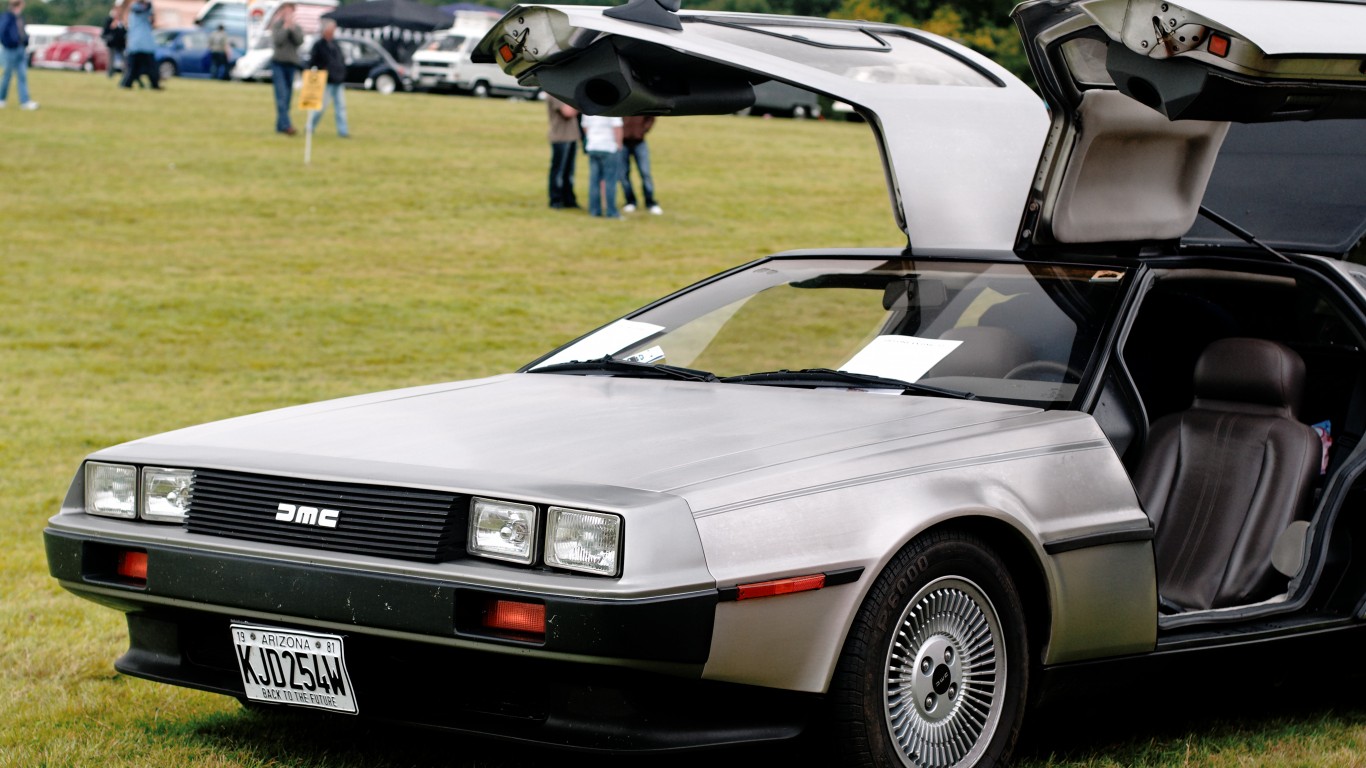
6. DeLorean DMC-12
Known today for transporting Marty McFly “Back to the Future,” the DeLorean DMC-12 was conceived by former General Motors executive John Z. DeLorean as the epitome of a luxury sports car. How luxurious? A 24-karat gold version of the DeLorean was listed for $85,000 in 1980. The gull-winged doors that opened to the skies, never took off with buyers, and by 1982, DeLorean’s company dissolved amid scandal.
[in-text-ad]

7. Suzuki X90
Car designs often fail because it attempts to reach all consumer segments. A good example of this is the 1996 Suzuki X90, which mingled a small SUV convertible with a two-door coupe. The result was a rather strange-looking small car meant to be an all-terrain vehicle that consumers apparently didn’t want to drive anywhere. With imports totaling 7,205 Suzuki was forced to fold this model after just two years.

8. Stout Scarab
Touted as the world’s first minivan, William Bushnell Stout, an aircraft designer, fashioned his namesake Scarab as a spacious and comfortable refuge for its driver. The interior included a couch where the owner could take a break from a long road trip. Conceived in 1932, the elongated egg-shaped design echoed elements of Art Deco. Stout loved his Scarab and racked up 250,000 miles on his car, but according to reports a mere nine were actually manufactured.

9. Reliant Robin
A three-wheeled car? Sure, why not? That must have been the thinking of Britain’s Reliant Motor Co. in 1973, when it introduced the fiberglass Robin. Unfortunately, a car with two rear wheels and one front wheel has a tendency to wobble on the road. But that wasn’t the only problem with the Robin. Its doors cracked when hit with strong winds, and the steering wheel would come off without warning. British drivers named the Reliant Robin the worst car of all time in a 2013 poll.
[in-text-ad-2]
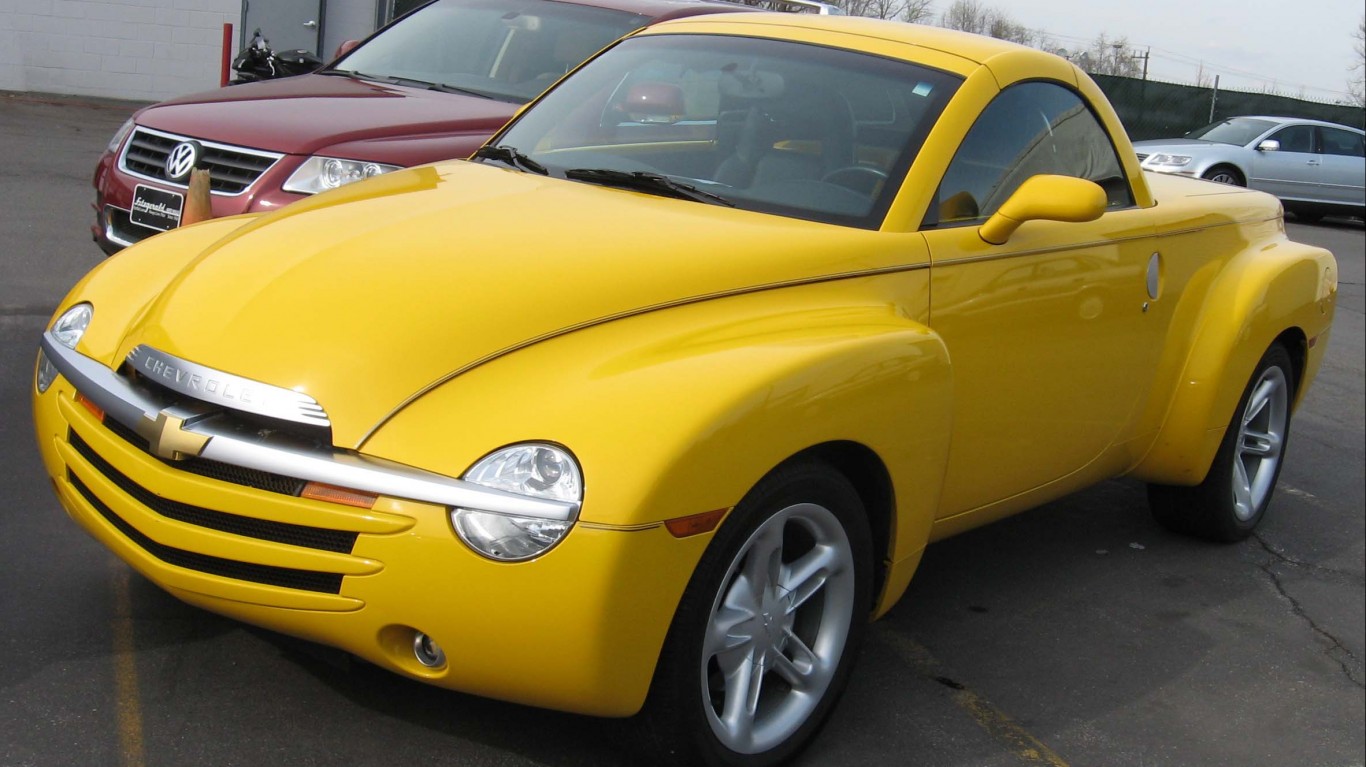
10. Chevrolet SSR
The Chevrolet SSR suffered from a severe case of “what is it?”-itis Was it a retro-styled convertible sports car? Or a pickup truck? And why would Chevrolet mix a pickup truck with two-seated roadster? Because it was built on a sturdy SUV chassis, the Chevrolet SSR could never vroom at the speed of the Super Sport Roadster it was supposed to be. By 2006, Chevrolet put the brakes on the SSR after manufacturing a paltry 25,000 cars.
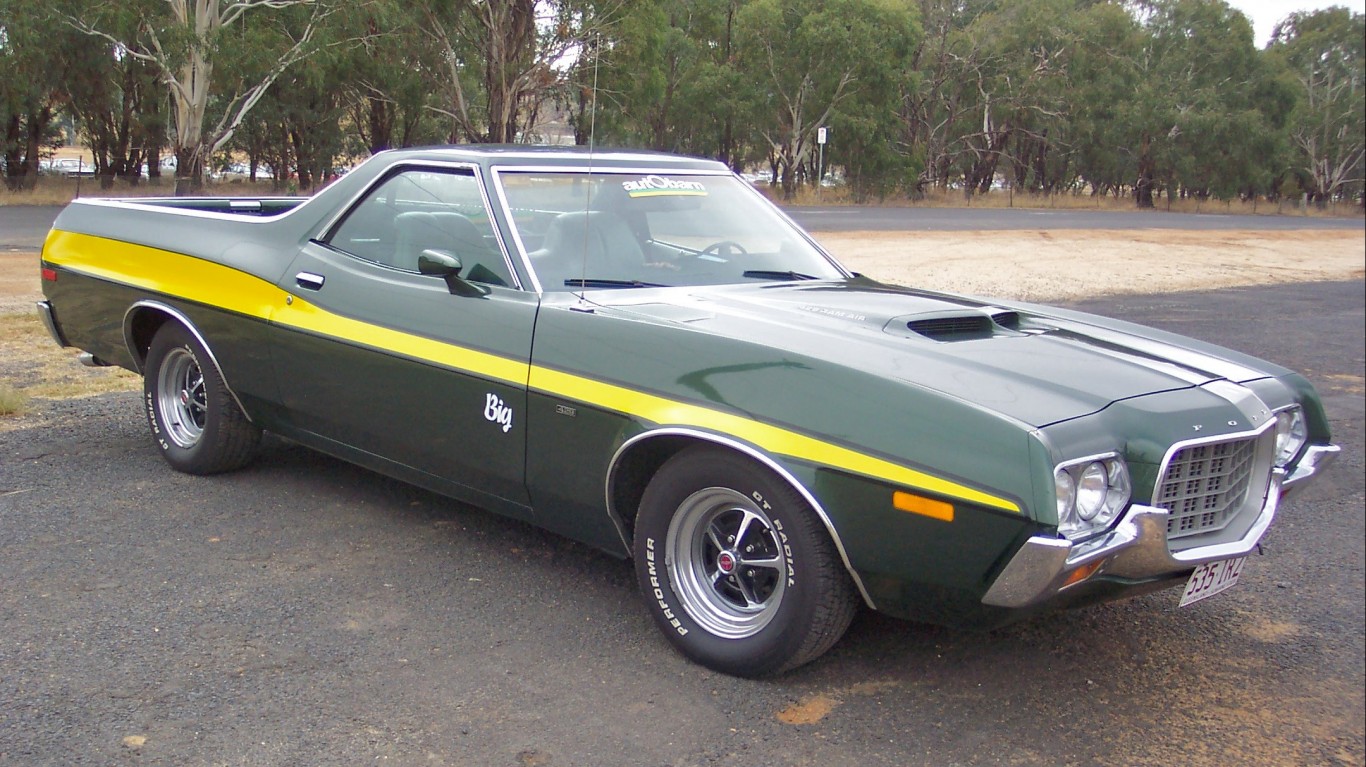
11. Ford Ranchero
Built between 1957 and 1979, the Ford Ranchero sold some 500,000 units, so consumers surely liked the car/truck combo. In fact, when it was first introduced, Ford marketed the Ranchero more as a truck for use by farmers who wanted loads of cargo space in a comfy sedan. It was so popular that Chevrolet manufactured the El Camino to compete with the Ranchero. As with many strange car designs throughout history, the public lost interest in the Ranchero because if people wanted a truck, they’d buy a truck. If they wanted a sedan, they’d buy a sedan.
[in-text-ad]

12. Isetta 300
Think compact cars are a modern phenomenon? Not so. This teeny “bubble” car was just 7.5 feet long and 4.5 feet wide with rear wheels separated by a mere 19 inches. Drivers had to enter the Isetta 300 through the lone front door to pilot a car that reached a top speed of 45 mph. A year after BMW introduced the Isetta in the early 1950s it offered a roomier Isetta 600 model with four doors. Though it was relatively affordable, it couldn’t stave off competition from other mini cars, like the Mini. So after producing 136,367 Isettas, BMW stopped manufacturing the model in 1962.

13. Ford Pinto
It’s not so much the uninspiring design of the Ford Pinto that has earned it automotive infamy — it’s the vehicle’s appalling safety record. Whenever the Pinto was involved in a rear-end collision, the rear fuel tank would split and cause an explosion. Some 500 such crashes led to deaths. The National Highway Traffic Safety Association forced a reluctant Ford into recalling all Pintos and upgrading the fuel tanks in the recalled models. The subcompact Pinto sold more than 3 million units in the 10 years after it was introduced in 1971, but today it’s more known for its controversial history.
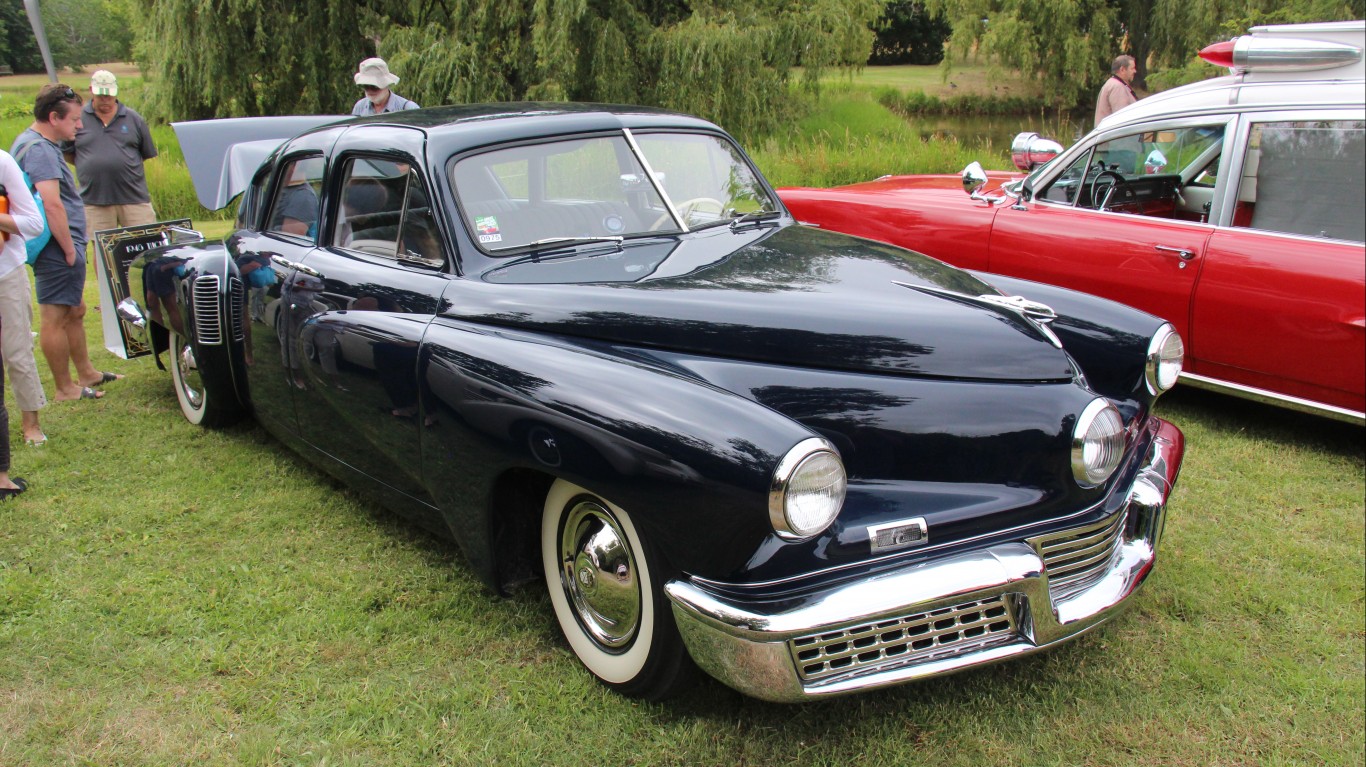
14. Tucker 48
Preston Thomas Tucker’s David and Goliath story was made into a Francis Ford Coppola-directed film, “Tucker: The Man and His Dream.” Tucker in 1948 went up against established U.S. automakers with his Tucker 48 model. It had some innovative features, like three front headlights, four-wheel independent suspension with disc brakes at each corner, seat belts (a rarity at that time), and a padded dashboard. Tucker ran into several legal and manufacturing issues that eventually led to the Tucker 48’s demise. Many, however, suspect Detroit’s Big Three were behind the car’s collapse.
[in-text-ad-2]

15. Lincoln Blackwood
Consumer research may occasionally lead even the most successful of car manufacturers to some pretty odd designs. When the luxury vehicle maker learned that many Lincoln owners also drove a pickup truck it built the Blackwood, a four-door sedan with pickup-like trunk in back. Except the trunk wasn’t really designed like most pickup trunks. It was covered with a hood and opened up like a normal car trunk would. The Blackwood was in production for only one model year — 2002 — and the company assembled a mere 3,356 cars.
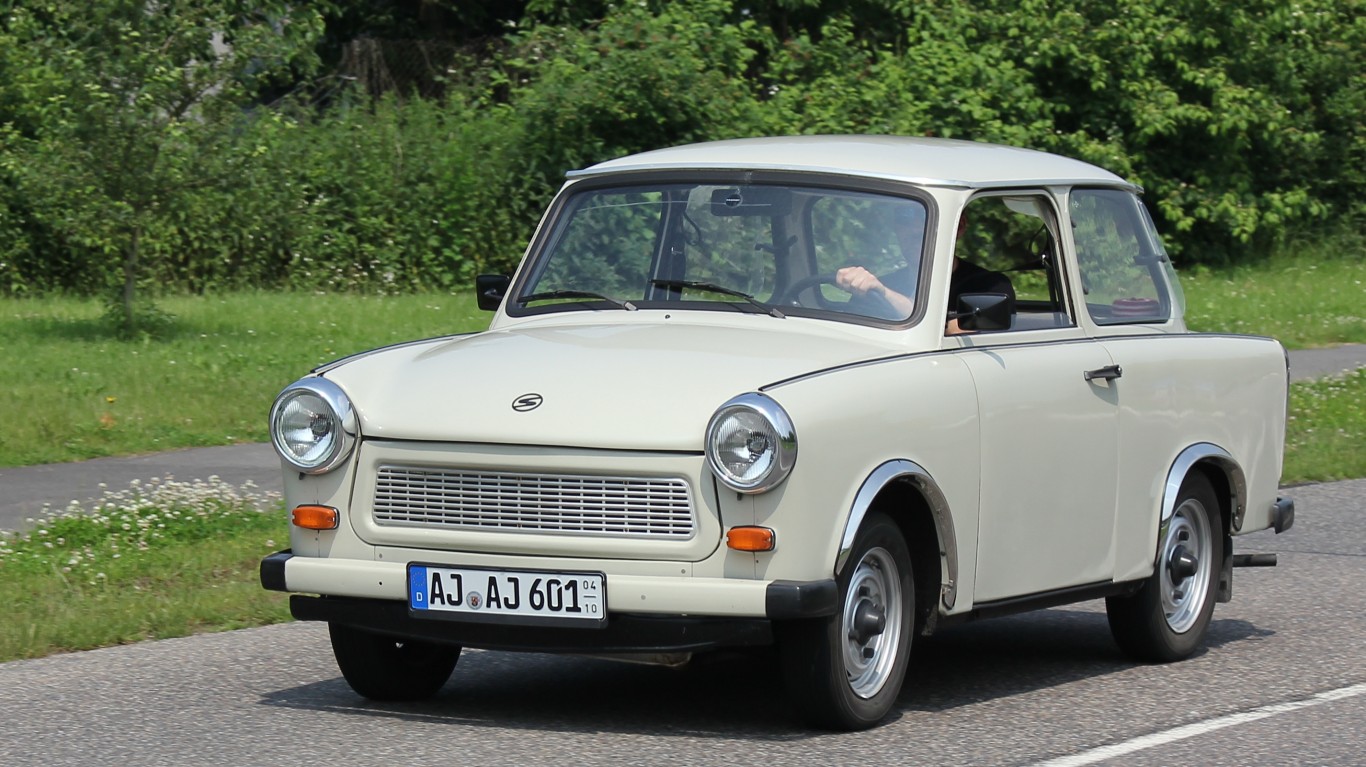
16. Trabant
When the Iron Curtain separated East and West Germany, Communist car makers had to develop vehicles East Germans could drive; after all, they couldn’t buy a Volkswagen Beetle from West Germany. One vehicle they came up with in the 1950s was the Trabant, a boxy little vehicle that actually contained some ahead-of-its-time features like front-wheel drive and independent suspension. As the Eastern Bloc began to fade in the late 1980s, so did the Trabant.
[in-text-ad]
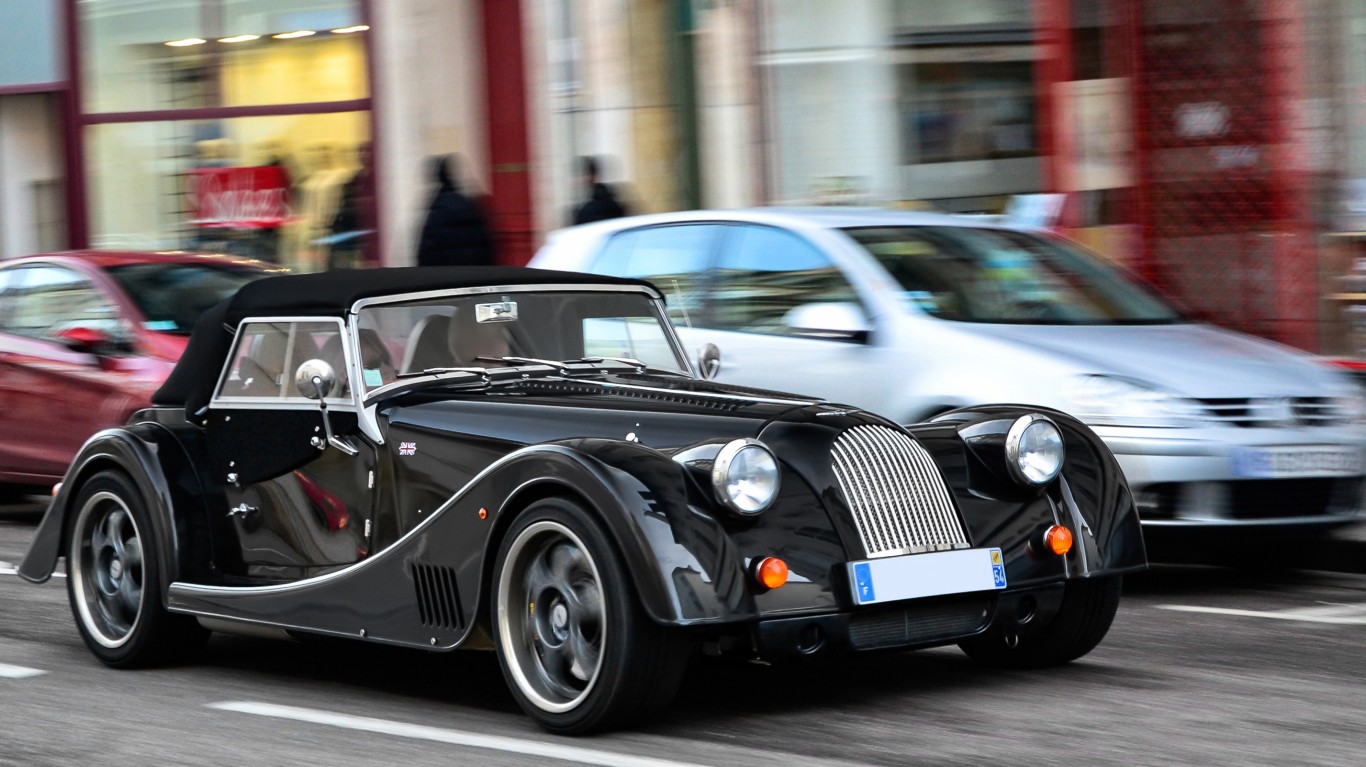
17. Morgan Plus 8
British sports car maker Morgan manufactured the Morgan Plus 8 for 50 years, ending its run last year. The look of the two-seater roadster harkens back to the sports cars that tooled along roads in the 1920s and 1930s. Celebrities loved it — Mick Jagger had one. It simply did the retro styling right. What sets the Morgan Plus 8 apart from other cars isn’t its design. It’s the fact that between 1974 and 1992, all Morgan models sold in the U.S. market ran on propane gas to meet U.S. emission standards.
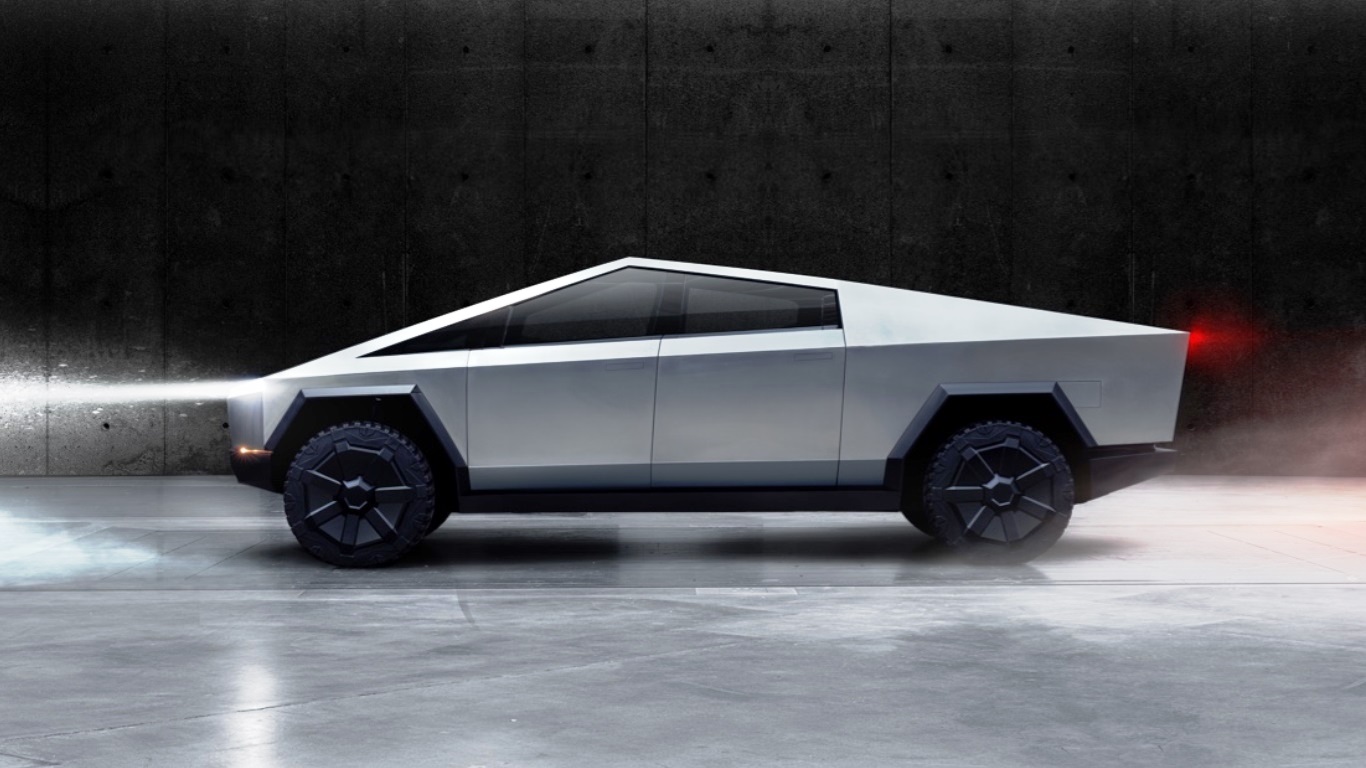
18. Tesla Cybertruck
Tesla’s lineup is known for its sleek and modern design. But its newest offering, the Cybertruck, looks like something out of a 1999 video game. The electric truck looks otherworldly, with a geometric design and a scratch-proof exterior made of stainless steel. Tesla CEO Elon Musk said if the company is “lucky” it may be able to deliver a few of the angular vehicles by the end of 2021, but he expects the bulk of its initial shipment to be delivered in 2022.
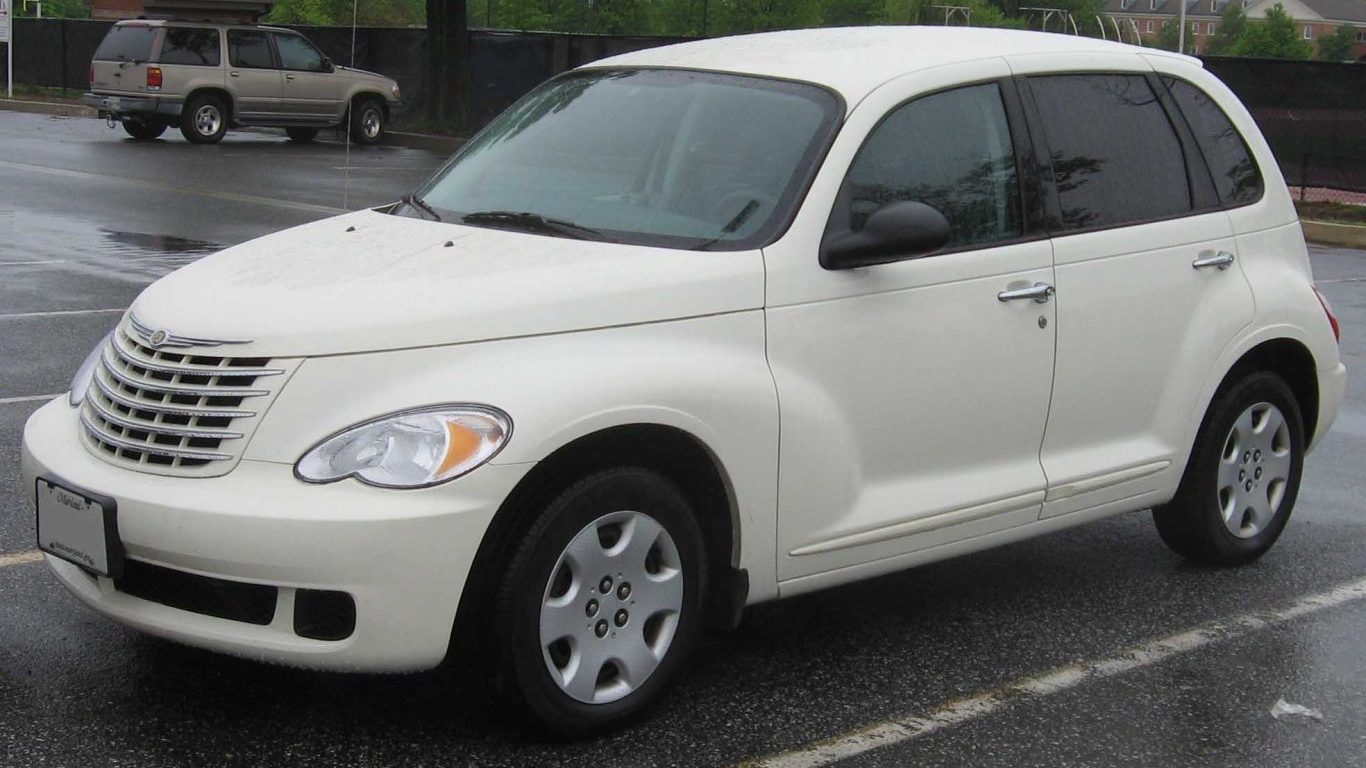
19. Chrysler PT Cruiser
It seems that Chrysler was aiming to lure nostalgic auto buyers with its throwback design on the PT Cruiser. But this didn’t really work out, as many were put off by the odd pointy front and the wheel arches protruding out the sides. Initially released in 2001, production of the PT Cruiser was discontinued in 2009. A number of car blogs have named the PT Cruiser as one of the ugliest cars ever made. The fact that the cars were often styled with wood paneling or even flame decals on the sides didn’t help.

20. Polaris Slingshot
The Polaris Slingshot does not fit neatly into any predetermined vehicle category. Is it a convertible? A dune buggy? A tricycle? How do you categorize a two-seat, three-wheel, open air vehicle (though roof add-ons are available.) In early 2020, it seemed like the Slingshot was on its last legs due to slumping sales, but a design overhaul led to a sales spike, so it seems Polaris will keep manufacturing these odd vehicles, at least for now.
Travel Cards Are Getting Too Good To Ignore
Credit card companies are pulling out all the stops, with the issuers are offering insane travel rewards and perks.
We’re talking huge sign-up bonuses, points on every purchase, and benefits like lounge access, travel credits, and free hotel nights. For travelers, these rewards can add up to thousands of dollars in flights, upgrades, and luxury experiences every year.
It’s like getting paid to travel — and it’s available to qualified borrowers who know where to look.
We’ve rounded up some of the best travel credit cards on the market. Click here to see the list. Don’t miss these offers — they won’t be this good forever.
Thank you for reading! Have some feedback for us?
Contact the 24/7 Wall St. editorial team.
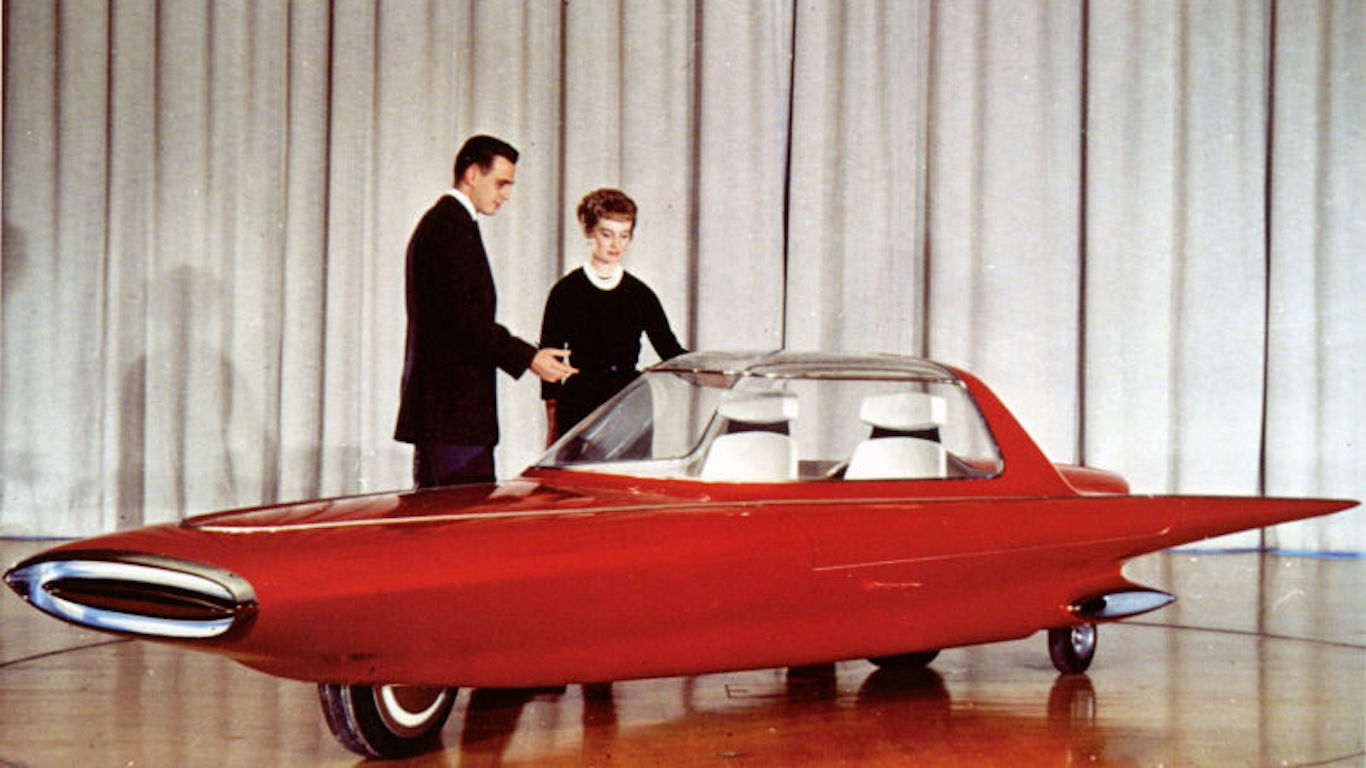 24/7 Wall St.
24/7 Wall St.
